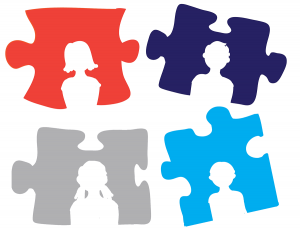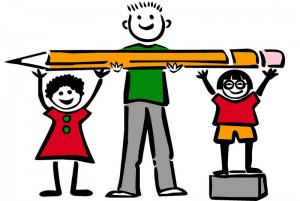Inquiry Question: All learners come at different academic levels in a classroom setting, so how as educators can we treat, support and respond to them all equally (considering different lesson plans, curricula, technology and personalized learning)?
Differentiated instruction has been a constant buzzword throughout my inquiry research. Even through my experience in my practicum classroom, differentiated instruction has been prevalent in motivating and encourage all students.
In the article, “You Get to Choose! Motivating Students to Read Through Differentiated Instruction” by Kathryn L. Servilio, Servilio promotes a 7 step guideline for integrating student choice with differentiated instruction. This 7 step guideline for the “You Get to Choose” reading program aids in motivating and engaging students with disabilities in academic areas, specifically in reading.
Step 1: Identify student needs and learning styles within your classroom.
-Identify the students’ goals, objectives for reading within the program and strategies that are already in place and are successful
-Utilize Kolb Learning Style Inventory, Myers Briggs Type Indicator, or Howard Gardner’s Multiple Intelligence Model to determine how all of the students learn
Step 2: Assess current student achievement
-Examples: End-of-quarter grades, portfolio assessment, scores on past curriculum reading assessments, oral assessments, or everyday assessment of reading and comprehension
-Determine how one will administer the assessments and the amount of points one will assign for each activity
Step 3: Select empirically based strategies for reading, comprehension and personal connection
-Use ideas in published articles for strategies that have been already identified and research as they are likely to be more successful
-When gathering strategies, teachers should sort them into categories based on 3 components: reading strategies, comprehension strategies, and personal connections
-Also begin to think which strategies work best with certain learning styles or intelligences
Step 4: Differentiate the material for the students with special needs
-After categorizing specific strategies to corresponding learning styles/intelligences, it should be fairly easy to choose activities for students
-However, keeping in mind that the materials for the students with disabilities then need to be further differentiated for individuals with specific disabilities
-Individualized method of meeting all the students’ academic needs at their level
Step 5: Provide options for student choice
-Design activities that offer the students a choice
-Reading: Have students read certain chapters individually or with partners/groups, or listen to assigned chapters on tape
-Comprehension: Write down questions you asked yourself as you read, summarize what you read, complete an advanced organizer on the events in the chapter
-Personal connection: Research on the computer and create a portrait of the character and respond to the portrait on how that person has affected your life, draw a picture and label what you think of all the characters (label the page numbers where you got your information that led you to believe that)
Step 6: Conduct the assessment
-If a teacher decides to use the portfolio assessment, then the teacher must use a checklist of activities each day to mark what the child has chosen
Step 7: Evaluate student performance
-Important to evaluate how well the students performed but also how the students’ felt about the program
-Students need to become comfortable with this program, since they may not be used to this approach in the past
-Ensure teachers use at least two books when using this 7 step guideline, as that will provide a well-rounded picture of the implementation of the program
Servilio strongly believes in that this 7 step program truly increases student engagement and learning for all students when it comes to reading. For me through this article, I learned how to approach differentiated instruction through steps 1, 3 and 4. I also learned that differentiated instruction should not be a easy way out for students in completing assignments and tasks, instead when differentiating teachers “should focus on the level of learning that will challenge the student” (p. 7).
Servilio, Kathryn L. (2009). You get to choose! motivating students to read through differentiated instruction. TEACHING Exceptional Children Plus, 5(5), 2-10. http://files.eric.ed.gov/fulltext/EJ967752.pdf







